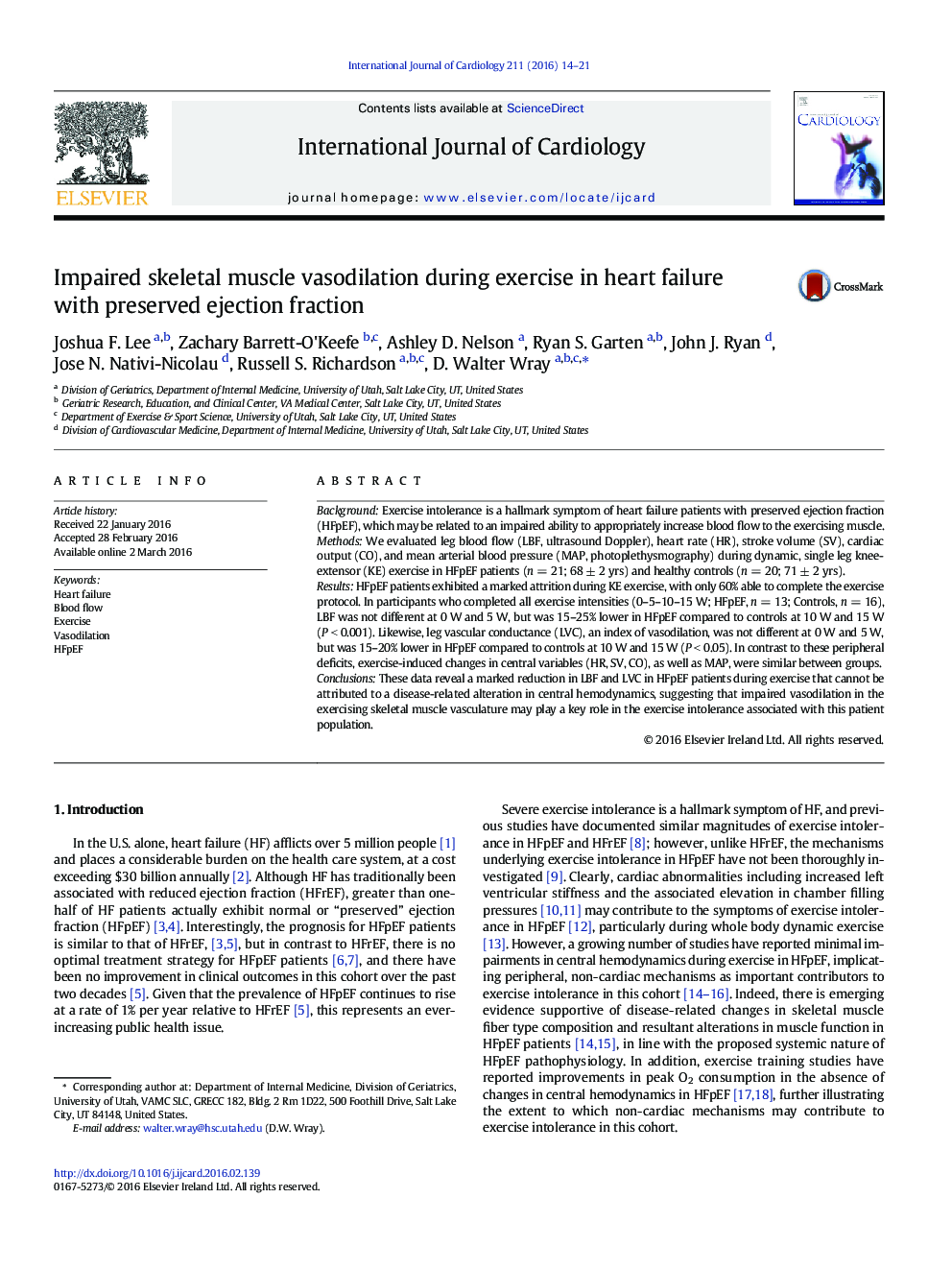| Article ID | Journal | Published Year | Pages | File Type |
|---|---|---|---|---|
| 2928854 | International Journal of Cardiology | 2016 | 8 Pages |
BackgroundExercise intolerance is a hallmark symptom of heart failure patients with preserved ejection fraction (HFpEF), which may be related to an impaired ability to appropriately increase blood flow to the exercising muscle.MethodsWe evaluated leg blood flow (LBF, ultrasound Doppler), heart rate (HR), stroke volume (SV), cardiac output (CO), and mean arterial blood pressure (MAP, photoplethysmography) during dynamic, single leg knee-extensor (KE) exercise in HFpEF patients (n = 21; 68 ± 2 yrs) and healthy controls (n = 20; 71 ± 2 yrs).ResultsHFpEF patients exhibited a marked attrition during KE exercise, with only 60% able to complete the exercise protocol. In participants who completed all exercise intensities (0–5–10–15 W; HFpEF, n = 13; Controls, n = 16), LBF was not different at 0 W and 5 W, but was 15–25% lower in HFpEF compared to controls at 10 W and 15 W (P < 0.001). Likewise, leg vascular conductance (LVC), an index of vasodilation, was not different at 0 W and 5 W, but was 15–20% lower in HFpEF compared to controls at 10 W and 15 W (P < 0.05). In contrast to these peripheral deficits, exercise-induced changes in central variables (HR, SV, CO), as well as MAP, were similar between groups.ConclusionsThese data reveal a marked reduction in LBF and LVC in HFpEF patients during exercise that cannot be attributed to a disease-related alteration in central hemodynamics, suggesting that impaired vasodilation in the exercising skeletal muscle vasculature may play a key role in the exercise intolerance associated with this patient population.
